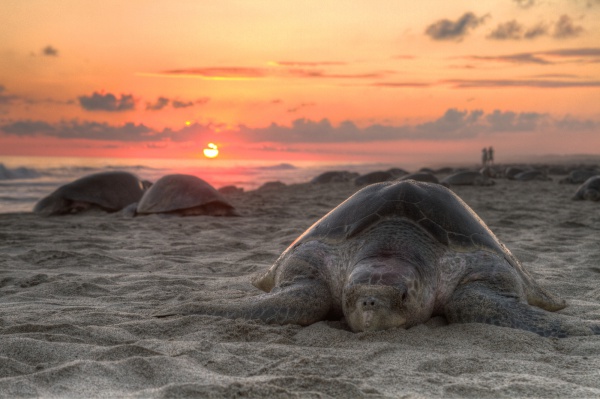Facts About Olive Ridley
The olive ridley sea turtle, scientifically known as *Lepidochelys olivacea*, is a fascinating member of the Cheloniidae family. It is the second smallest and most abundant sea turtle species, thriving in the warm, tropical waters of the Pacific, Indian, and Atlantic Oceans. One of the most captivating aspects of olive ridleys is their mass nesting behavior, known as arribada, where thousands of females come together on beaches to lay their eggs.
Over time, the olive ridley has been assigned several scientific names before settling on *Lepidochelys olivacea*. These turtles are easily recognizable by their olive-colored, heart-shaped shells. Both males and females grow to approximately the same size and have distinctive features such as paddle-like forelimbs and a broad head. Their lateral scute counts can vary, adding to their unique appearance.
Despite their abundance, olive ridleys face several threats. Habitat destruction, pollution, climate change, and predation are significant concerns. Human activities such as egg harvesting and bycatch in fisheries also pose serious risks. Thankfully, global conservation efforts are underway to protect these turtles, including legal protections, conservation programs, and public outreach initiatives. The International Union for Conservation of Nature (IUCN) lists them as vulnerable, and they are included in Appendix I of the Convention on International Trade in Endangered Species (CITES).
In some communities, olive ridleys hold economic value, with their eggs being harvested for food and considered a delicacy. There have been attempts to harvest eggs sustainably to benefit local economies while still protecting the species. Conservation efforts, such as relocating eggs to hatcheries and releasing hatchlings into the sea, aim to boost survival rates and preserve the population.
In conclusion, the olive ridley sea turtle is a remarkable species facing many challenges. However, ongoing conservation efforts worldwide are making a difference. Protecting their nesting grounds, minimizing human impact, and raising awareness about their conservation status are all crucial steps to ensure the long-term survival of these incredible turtles.

 Laos
Laos